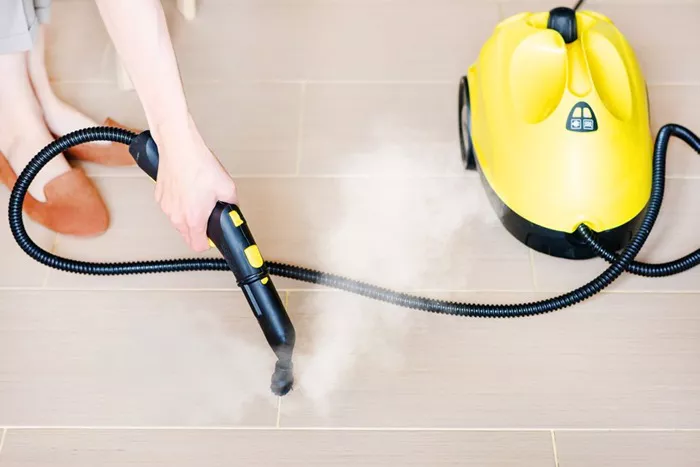Choosing the best vacuum cleaner can be overwhelming with so many options available. Whether you have carpets, hardwood floors, or pets, the right vacuum can make cleaning easier and more efficient. This guide will help you understand the different types of vacuum cleaners, key features to look for, and recommendations based on your needs.
Understanding Different Types of Vacuum Cleaners
Vacuum cleaners come in various designs, each suited for different cleaning tasks. Upright vacuums are powerful and ideal for large carpeted areas. They often come with motorized brushes that dig deep into fibers to remove dirt and pet hair. Canister vacuums, on the other hand, are more versatile. They have a separate canister and wand, making them great for stairs, curtains, and hard floors. Stick vacuums are lightweight and convenient for quick cleanups, while handheld vacuums are perfect for small messes and car interiors.
Robotic vacuums have gained popularity for their hands-free operation. These smart devices can navigate around furniture and even empty their own dustbins in some models. However, they may not be as powerful as traditional vacuums for deep cleaning. For those who want a cordless option, cordless stick vacuums offer flexibility but usually have shorter battery life. Understanding these types will help you decide which one fits your lifestyle best.
Key Features to Consider When Buying a Vacuum Cleaner
Suction power is one of the most important factors in a vacuum cleaner. Strong suction ensures that dirt, dust, and debris are effectively removed from floors and carpets. Look for vacuums with high airflow and sealed systems to prevent suction loss. Filtration is another critical feature, especially for allergy sufferers. HEPA filters are the gold standard as they trap 99.97% of particles, including pollen and pet dander.
Bagged vs. bagless is another consideration. Bagged vacuums tend to hold more dust and are more hygienic when emptying, but they require ongoing purchases of replacement bags. Bagless models save money in the long run but can be messy to empty. Noise level is also important, especially in households with babies or noise-sensitive individuals. Some vacuums operate as quietly as 60 decibels, while others can be much louder.
Maneuverability and weight play a role in how easy a vacuum is to use. Heavy models can be difficult to push and carry, especially up stairs. Swivel steering and adjustable handles improve ease of movement. Additional attachments like crevice tools, upholstery brushes, and pet hair removers add versatility. Finally, consider the warranty and customer service reputation of the brand to ensure long-term satisfaction.
Best Vacuum Cleaners for Different Needs
For homes with mostly carpets, an upright vacuum with strong suction and a motorized brush roll is ideal. Models like the Shark Navigator Lift-Away or the Dyson Ball Animal 2 are excellent choices. These vacuums dig deep into carpet fibers and pick up embedded dirt effectively. If you have mostly hardwood or tile floors, a canister vacuum or a stick vacuum with a soft roller brush will prevent scratches while capturing dust efficiently. The Miele Classic C1 and the Dyson V15 Detect are great options for hard floors.
Pet owners need vacuums that can handle fur and dander. Look for models with specialized pet hair attachments and strong suction. The Bissell Pet Hair Eraser and the Shark APEX DuoClean are designed specifically for pet households. For those who want convenience, a robotic vacuum like the iRobot Roomba j7+ can automatically clean while you focus on other tasks. If you prefer cordless cleaning, the Dyson V12 Detect Slim offers powerful suction in a lightweight design.
Budget-friendly options are also available without sacrificing performance. The Eureka PowerSpeed is an affordable upright vacuum that works well on carpets and hard floors. The Hoover WindTunnel T-Series is another reliable choice for those looking for a good balance between price and features. No matter your budget or cleaning needs, there is a vacuum cleaner that will make your home spotless with minimal effort.
Maintenance Tips to Keep Your Vacuum Cleaner Running Smoothly
Regular maintenance extends the life of your vacuum cleaner. Empty the dustbin or replace the bag before it gets too full to maintain strong suction. Clean or replace filters every few months, especially if you have allergies or pets. Check the brush roll for tangled hair and debris, as blockages can reduce efficiency. Inspect hoses and attachments for clogs, and wipe down the exterior to keep it looking new.
Battery-powered vacuums require proper charging habits to preserve battery life. Avoid leaving them plugged in continuously, and store them in a cool, dry place. For robotic vacuums, clean the sensors and brushes regularly to ensure smooth navigation. Following these simple steps will keep your vacuum performing at its best for years.
Conclusion
The best vacuum cleaner depends on your specific needs, floor types, and budget. Upright vacuums are great for deep carpet cleaning, while canister and stick vacuums offer versatility for mixed flooring. Pet owners should prioritize strong suction and specialized attachments, while those with allergies need advanced filtration. Robotic and cordless models provide convenience but may require trade-offs in power or runtime.
By understanding the different types, key features, and maintenance requirements, you can make an informed decision. Investing in the right vacuum cleaner will save you time and effort, keeping your home cleaner and healthier. Whether you opt for a high-end model or a budget-friendly option, the right vacuum will make daily chores much easier. Take the time to research and choose wisely—your floors will thank you.
Related topics:
Tineco Offers Valentine’s Day Home Comfort Deals
Tineco Unveils Exclusive Amazon Pet Day Deals on Powerful Pet Vacuums
What’s the Newest Dyson Vacuum Cleaner?

